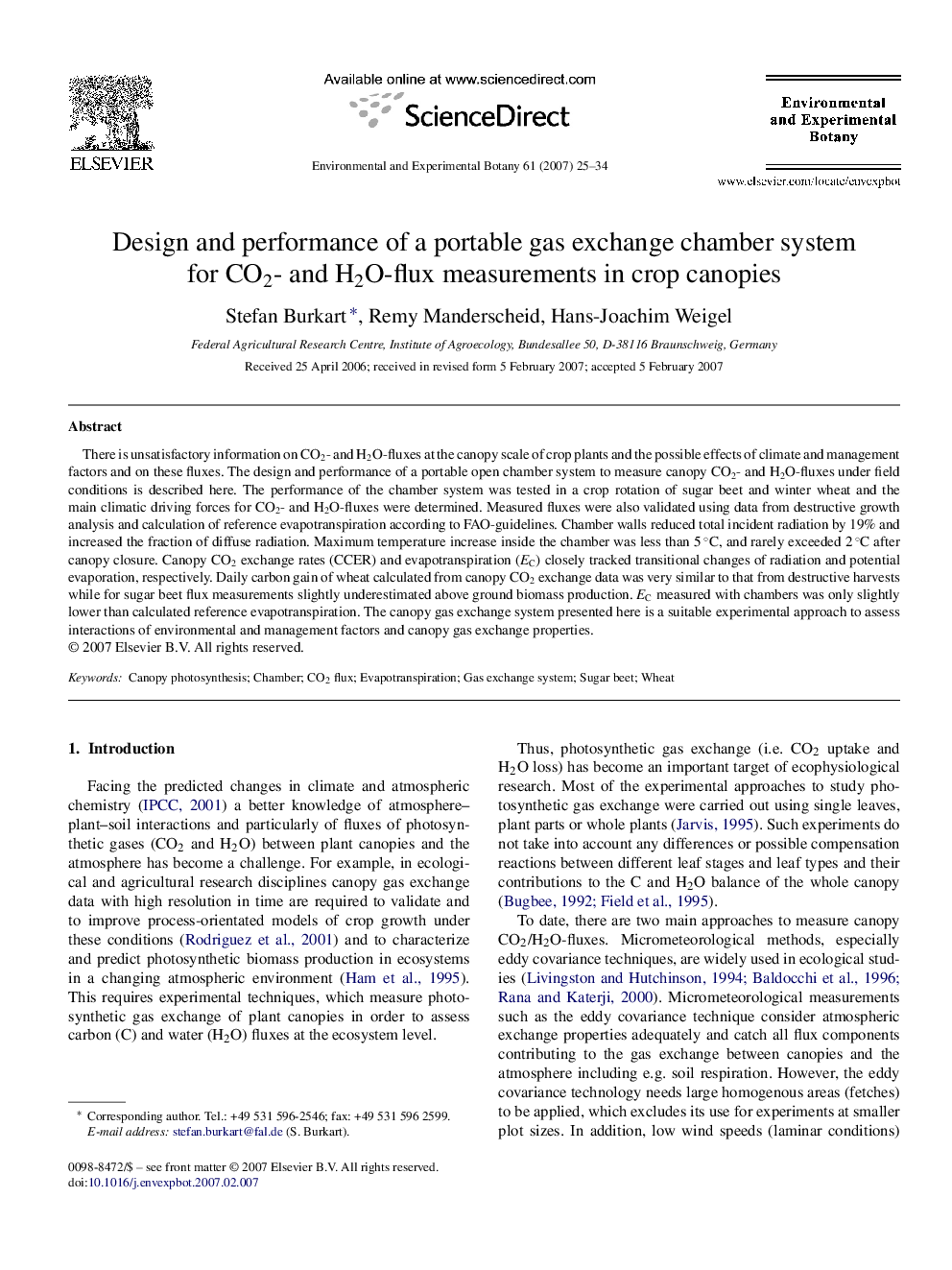| Article ID | Journal | Published Year | Pages | File Type |
|---|---|---|---|---|
| 4555406 | Environmental and Experimental Botany | 2007 | 10 Pages |
There is unsatisfactory information on CO2- and H2O-fluxes at the canopy scale of crop plants and the possible effects of climate and management factors and on these fluxes. The design and performance of a portable open chamber system to measure canopy CO2- and H2O-fluxes under field conditions is described here. The performance of the chamber system was tested in a crop rotation of sugar beet and winter wheat and the main climatic driving forces for CO2- and H2O-fluxes were determined. Measured fluxes were also validated using data from destructive growth analysis and calculation of reference evapotranspiration according to FAO-guidelines. Chamber walls reduced total incident radiation by 19% and increased the fraction of diffuse radiation. Maximum temperature increase inside the chamber was less than 5 °C, and rarely exceeded 2 °C after canopy closure. Canopy CO2 exchange rates (CCER) and evapotranspiration (EC) closely tracked transitional changes of radiation and potential evaporation, respectively. Daily carbon gain of wheat calculated from canopy CO2 exchange data was very similar to that from destructive harvests while for sugar beet flux measurements slightly underestimated above ground biomass production. EC measured with chambers was only slightly lower than calculated reference evapotranspiration. The canopy gas exchange system presented here is a suitable experimental approach to assess interactions of environmental and management factors and canopy gas exchange properties.
